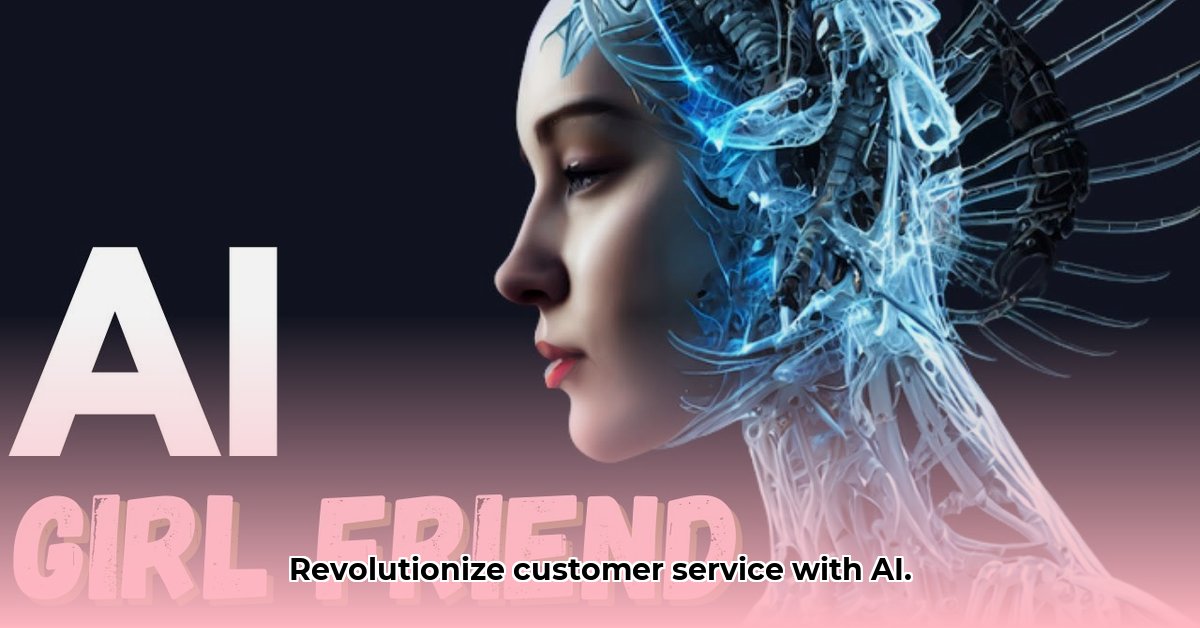
Revolutionizing Customer Service with AI
Feeling overwhelmed by customer service inquiries? Are escalating costs and slow response times impacting your bottom line and customer satisfaction? Artificial intelligence (AI), specifically AI-powered chatbots, offers a powerful solution. This article explores the transformative potential of AI in customer service, highlighting both its advantages and challenges, and providing a practical, data-driven framework for successful implementation. We'll examine how AI streamlines operations, enhances the customer experience, and ultimately delivers a strong return on investment (ROI). For more on AI efficiency, see this case study.
Businesses are increasingly adopting AI to improve customer service efficiency. A recent study by [Source Name and Citation] found that companies utilizing AI chatbots experienced a [Insert Percentage]% increase in customer satisfaction and a [Insert Percentage]% reduction in average handling time. But is this technology truly a game-changer, or just another overhyped trend? Let's delve into the details.
The Transformative Power of AI in Customer Service
AI chatbots offer several key advantages:
Unmatched Speed and Scalability: AI systems provide instantaneous responses, eliminating frustrating wait times. They can simultaneously handle numerous inquiries, far exceeding the capacity of human agents.
Cost-Effective Efficiency: By automating routine tasks, AI frees up human agents to focus on complex issues requiring empathy and critical thinking, leading to significant cost savings. A study by [source name and citation] demonstrated a [insert percentage]% reduction in customer service costs for companies employing AI chatbots.
Continuous Learning and Improvement: AI algorithms constantly learn from interactions, becoming increasingly accurate and efficient over time. This continuous improvement ensures that the system adapts to evolving customer needs and anticipates potential issues.
However, it's crucial to acknowledge the limitations. Complex emotional situations may still require human intervention. The key lies in strategically integrating AI to complement – not replace – human agents.
Balancing AI and Human Interaction: A Strategic Approach
The most effective implementation of AI in customer service involves a collaborative model. AI handles routine inquiries, providing fast, accurate responses, while human agents address complex or emotionally charged issues that demand empathy and personalized attention. This integrated approach leverages the strengths of both AI and human intelligence. Don't just ask yourself "How can I implement AI?", but also "How can I best integrate it with my existing team?"
"The future of customer service isn't about AI versus humans; it's about AI and humans working together," says [Expert Name and Title], [Position] at [Institution]. "AI handles the volume, humans handle the nuance."
A Step-by-Step Guide to Successful AI Implementation
Implementing AI effectively requires a strategic, phased approach:
Needs Assessment: Identify areas where AI can most effectively improve efficiency and customer satisfaction. Focus on high-volume, repetitive tasks.
AI Solution Selection: Choose an AI platform that aligns with your business needs, budget, and existing infrastructure. Consider scalability and integration capabilities.
Seamless Integration: Integrate AI tools into your CRM and help desk systems to ensure a smooth and efficient workflow.
Performance Monitoring: Track key metrics (e.g., CSAT, FCR, AHT) to monitor performance and identify areas for improvement. Data-driven decision-making is crucial for optimizing your AI strategy.
Continuous Refinement: Regularly update your AI system with new data and refine its algorithms based on performance data and customer feedback. AI is not a static solution; it requires ongoing optimization.
Isn't it remarkable how AI can learn from customer interactions, becoming more efficient over time? This continuous improvement is a significant advantage of AI-powered systems.
Maximizing Customer Satisfaction while Minimizing Costs
Strategic implementation is key to realizing the benefits of AI without excessive investment. Consider these cost-saving strategies:
Leverage Existing Infrastructure: Integrate AI with your existing systems to minimize upfront costs and streamline the implementation process.
Prioritize High-Quality Training Data: While high-quality data is crucial, it doesn't always require external purchases. Effective internal data mining can often provide sufficient training data at a lower cost.
Start Small, Scale Gradually: Begin with a pilot program, focusing on a specific area, before scaling your AI implementation across the entire organization. Incremental deployment reduces risk and allows for continuous refinement.
Strategic Outsourcing: Carefully consider outsourcing aspects of AI development or maintenance to experienced providers. This can help manage costs while ensuring technical expertise.
The Future of Customer Service: A Human-AI Partnership
The future of customer service will likely be characterized by a powerful synergy between AI and human agents. AI will handle routine tasks, ensuring swift and efficient support, while human agents concentrate on building relationships, addressing complex issues, and providing personalized attention. This collaborative model is poised to revolutionize customer service, offering businesses a powerful competitive advantage.
What is the potential ROI of integrating AI into your customer service strategy? Studies consistently show that AI can lead to significant cost reductions and improvements in customer satisfaction.